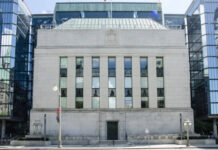Markets
The first quarter of the year ends completely different than how it started. US president Trump’s pro-growth policy agenda generated a lot of market optimism all the way through January-February. Then things started unravelling fast. Concerns grew over the US administration’s isolationist-protectionist stance, geopolitically and economically, while inconsistent communication & seemingly haphazard decision-making sows confusion and paralysis. Trump’s upcoming “Liberation Day”, during which he’ll unveil reciprocal (or universal after all?!) tariffs, serves as a case in point. His initial goal of slapping individual countries with tariffs to match the one they charge the US has been up for revision numerous times. Markets can only hope for a clearcut announcement instead of vague threats that keep uncertainty highly elevated. We’ve seen nervousness picking up by mid last week ahead of April 2 and the start of the new one is no different. Stocks in Europe decline with Germany’s DAX underperforming regional peers (-1.9%). Wall Street’s downward momentum simply goes on. The Nasdaq slides another 2.3% on top of the 2.7% last Friday. Core bonds are rallying with US Treasuries outperforming German Bunds. Safe haven flows to the world’s most liquid asset help explain this outperformance but it’s as least as much driven out of growing US recessionary concerns. US rates drop between 4.5-5.8 bps across the curve. Money markets price in more than three rate cuts this year, bypassing the Fed’s dot plot that penciled in two. German yields ease 2.1 to 4.1 bps but are off the intraday lows. The 10-yr benchmark tested and then bounced of the 2.66% area (March 5 defense-announcement related gap). Bunds underperform vs swap. The scarce economic data available for today included German March inflation numbers but obviously had zero market impact, if only because they came in close to expectations (0.4% m/m and 2.3% y/y). The dollar’s lackluster performance given the sizeable risk-off is telling (of a US recessionary risk premium). EUR/USD holds steady north of 1.08, the trade-weighted dollar index briefly fell through the 104 handle before paring losses. The Japanese yen is today’s star performer although didn’t capitalize the strong Asian momentum. USD/JPY hit a low of 148.7 but is now trading around 149.5. Oil prices eke out a gain that brings a barrel of Brent to its highest since end-February ($74.3/b). Trump threatened to impose secondary tariffs on buyers of Russian oil, reportedly over grievances against Russian president Putin violating the US brokered ceasefire agreement. The perhaps biggest beneficiary of all the uncertainty sloshing around in markets these days is gold. The precious metal sharply rose over the last couple days with a new record high today at $3120/ounce (+1.2%).
News & Views
Polish March CPI rose by 0.1% M/M and 4.9% Y/Y, unchanged from February and vs 5.1% expected, Poland Statistics reported today. In a monthly perspective the price of electricity and gas fell by -0.1% (still +13.3% Y/Y) and fuel prices by 2.0% M/M (-4.7% Y/Y). Food prices increased 0.3% M/M to be 6.7% higher Y/Y. The inflation reading was also below the estimate of the March inflation report of the National Bank of Poland as it assumed inflation on average at 5.4% in Q1. The data probably will further revive the internal rate cut debate within the MPC. Governor Glapinski and the hawkish wing within the MPC recently held the view that there is no room to cut the policy rate (5.75%) anytime soon. A reduction at this week’s meeting is not expected, but today’s data support the case of the doves within the MPC that pieces are falling into place for some easing of policy restriction e.g. in summer.
Data from the Hungarian Statistical Office today showed that gross wages in the country eased less than expected in January. Gross wages were reported at 10.4% down from 11.3% in December, but a slowdown below 10% was expected. Real earnings were 4.6% higher than a year earlier, considering inflation at 5.5%. The data suggest that alongside considerations financial stability, there is still little reason for the National Bank of Hungary to resume its easing cycle anytime soon. The MNB last week keep its policy rate unchanged at 6.5%. The forint recently briefly strengthened below EUR/HUF 400, but over the previous days ceded some ground, amongst others on the announcement that investment funds need to invest a higher proportion of their assets in Hungarian government bonds. Today, the Finance Ministry also downwardly revised its 2025 growth forecast to 2.5% from 3.4% previously.













